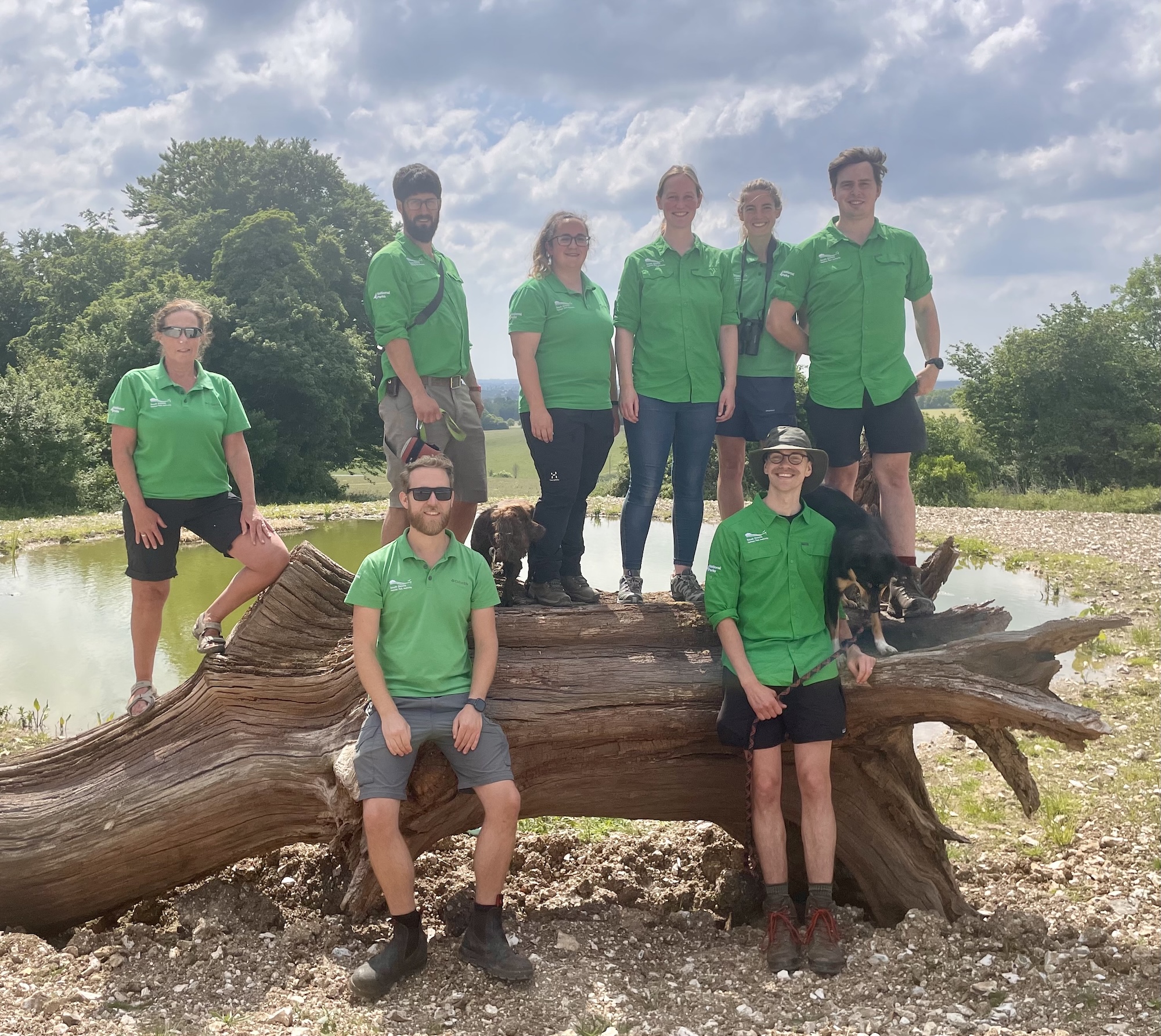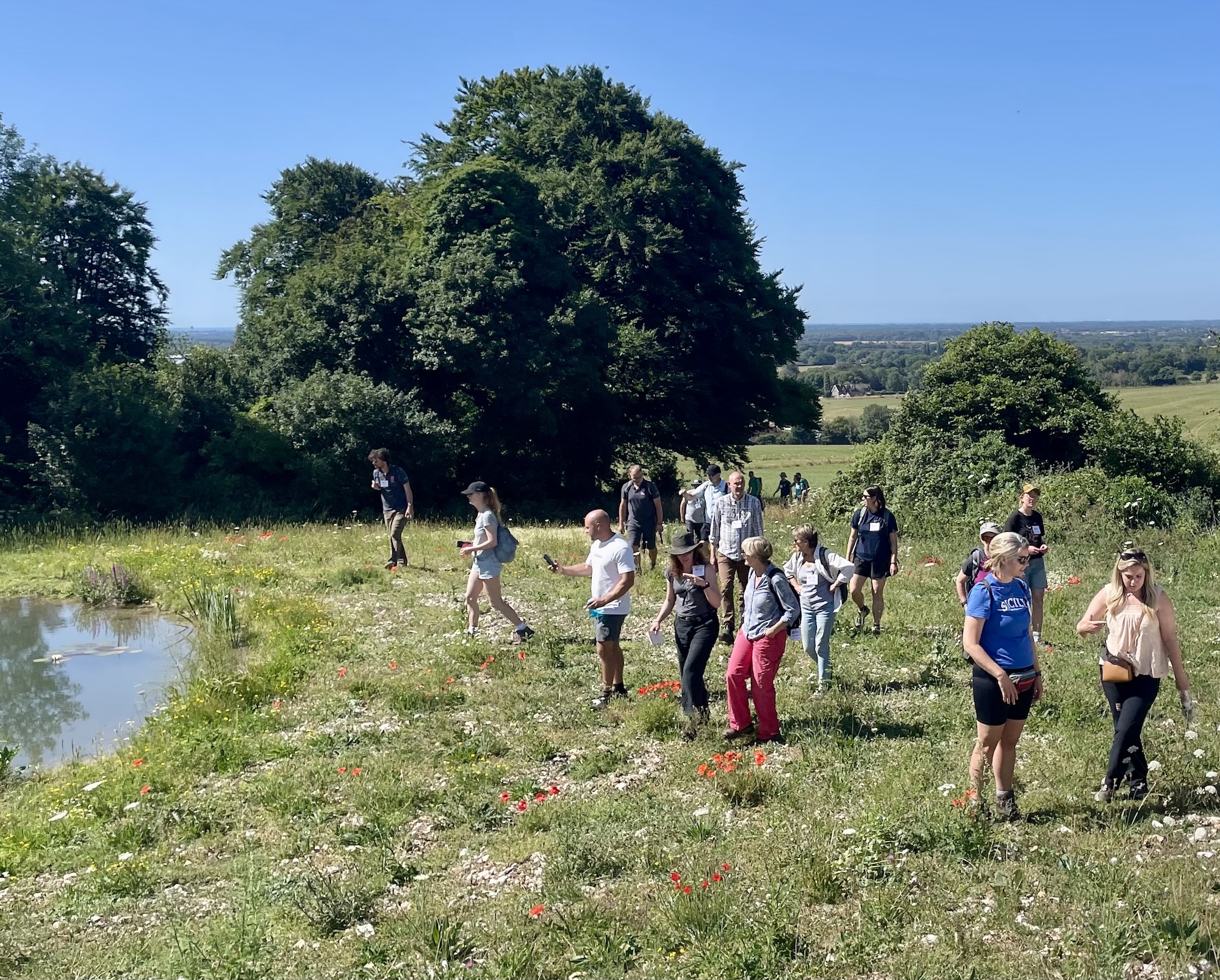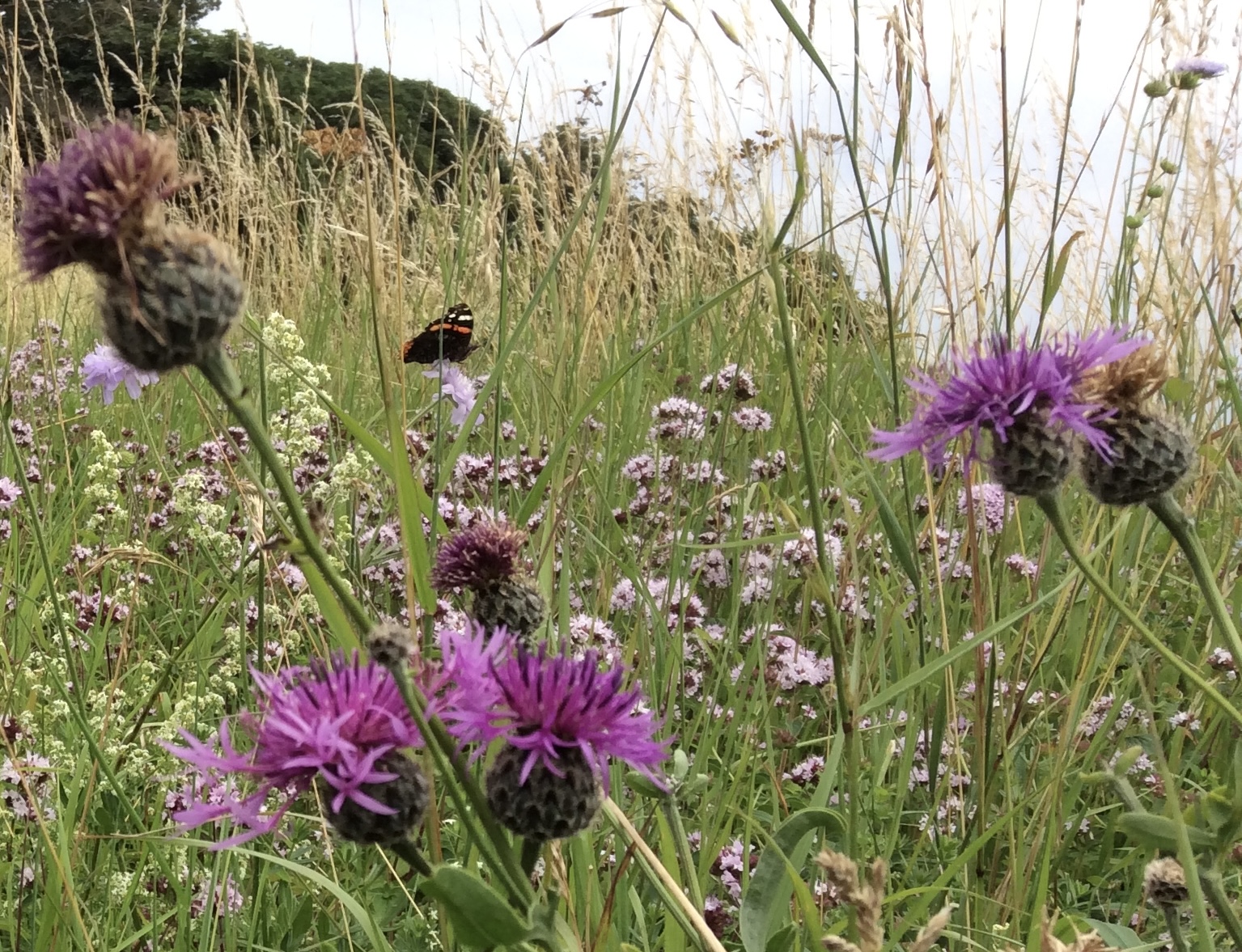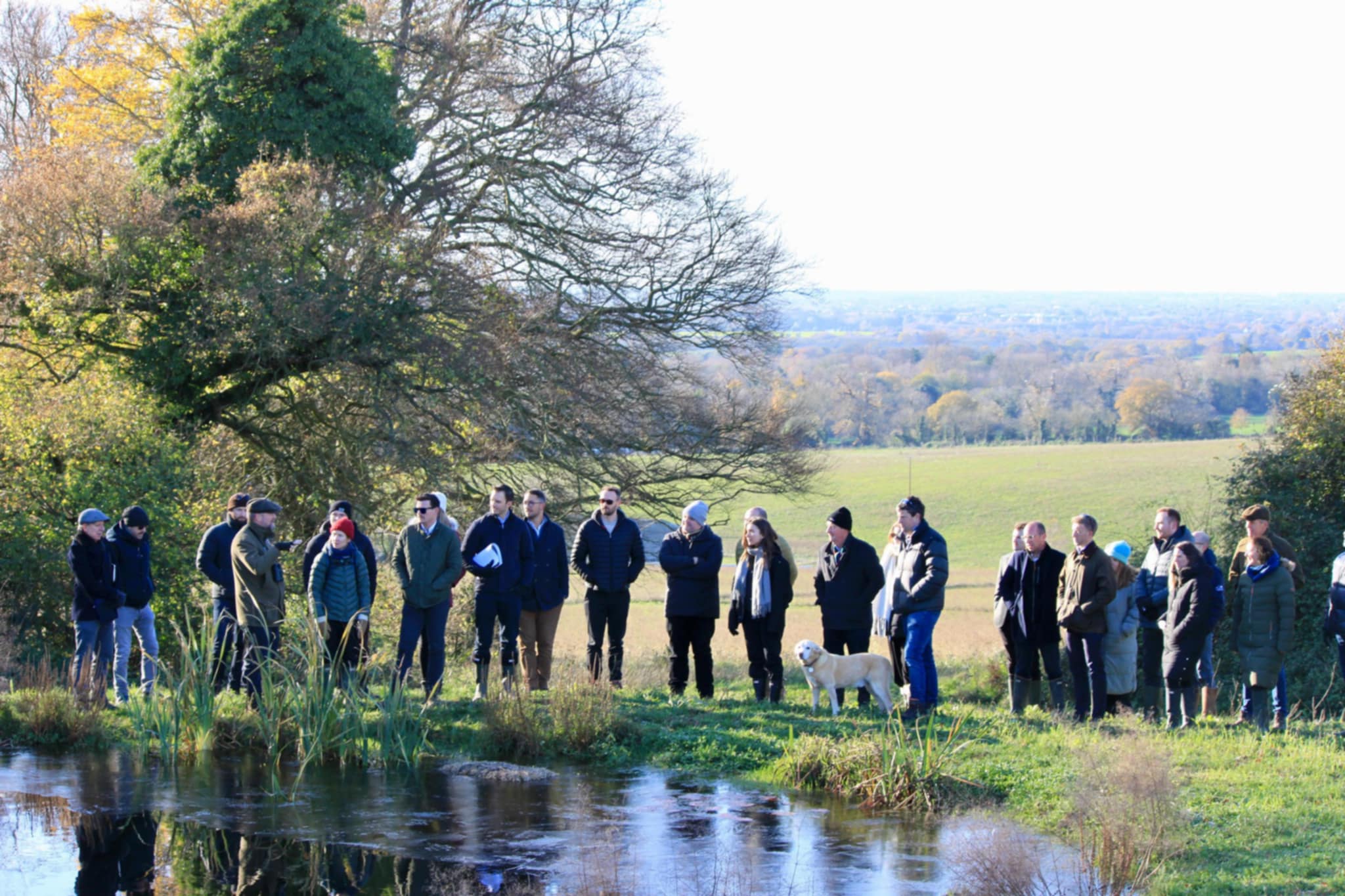Nature is making a comeback – and we’re happy to share!
There’s been a real buzz at Halnaker Hill Farm lately as our renaturing work is starting to show some exciting results – and it’s been great to welcome visitors who are just as passionate about nature as we are.
Spotting butterflies with Neil Hulme

Recently, we had a visit from Neil Hulme, a well-known leading ecologist specialising in butterflies, Neil’s expertise sees him undertake surveys, wild safaris, and ecological advice across the South East including for Knepp Estate, Sussex Wildlife Trust and the South Downs National Park Authority.
Neil’s visit was a big moment for us – he’s seen a lot of landscapes across the Downs, so we were really keen to hear what he thought. Neil described the farm as a “treasure trove” and “packed with enormous potential”, and spotted several butterfly species that are signs of a recovering healthy habitat, including the Dark Green Fritillary, Marbled White, Small Skipper, and Common Blue. We will be working with Neil going forward as he joins our advisory team.
Sharing what we've learned

We hosted the South Downs National Park Authorities Ranger Team, along with a group of fellow rangers from the eastern part of the park. For practitioners it was a great opportunity to see how the re-naturing work is going and to exchange ideas about what’s working in different areas. The rangers work with a multitude of farmers and land managers across the national park, so it was a great chance to walk the land together, talk honestly about the challenges, share ideas, be inspired and show what’s been possible here in just a short time.
A few pleasant surprises!

We were treated to a visit from members of the National Landscape Association network. They were attending their annual conference, and Halnaker Hill Farm was top of the agenda for a tour led by the South Downs National Park Authority.
Delegates from National Landscapes (Devon, Llŷn Peninsula, Dorset and Wye Valley to name a few) came to learn more about the renaturing process and to see the results for themselves.
While exploring the site, they had a few exciting sightings – spotting Mistle Thrush and Yellowhammer, and observing some Kidney Vetch, a key food plant for the small blue butterfly, growing in areas where we’ve been restoring chalk grassland. Delegates described the farm as inspirational and were blown away by the achievements already made.
Small Steps, Big Changes
These visits have reminded us how far we’ve come and how important it is to share this journey with others - whether it’s experienced ecologists, rangers, or people just curious about what renaturing looks like. We know there’s still a lot of work to do, but seeing the butterflies return and wildflowers take root again, and sharing this with others, makes it all feel worthwhile!
Related Posts



